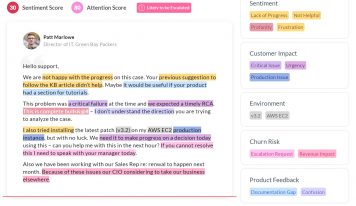The cyclical nature of the computer market is intriguing. When I first got my engineering degree from UCONN, the computer than most of the school was an IBM system 360-370 and we had to program on an OS called MVS and use dumb terminals. My memories are a bit cloudy – similar to how some repress pain or anguish. As I write this article I get that feeling you get when you have that dream – you know the one, where you are running to get to a final but haven’t been to class all semester so you don’t know where it is.
The only thing worse than how you feel when you wake up from such a dream is using an IBM mainframe in batch processing mode. You ran a program and as I recall went to a printer room to get the output.
As my professor of IBM Assembly language used to tell us – it was CS 267 and I don’t remember his name, the computer used to cost much more than the programmer and as such programs were batched. You batched your programs, sent them to the computer and then got a result.
Over time, computers became cheaper than people and we went into the world of PCs. Before PCs came into vogue many of us used Unix. I was a UNIX programmer back in 1982 and actually wrote the first database programs that TMC had at that time. I wrote invoicing and labeling programs, etc. At the time a hard disk cost $10,000 and held 52 megabytes! For those of you kids out there, notice there is no gigabyte reference. These drives weighed as much as a bowling ball and occupied as much space!
Getting back to my story, we are in a PC world and now with the advent of the web and programming tools like AJAX, etc we are beginning to see application intelligence on the server with dumb clients once again.
I was reminded of this story when I learned about a new company called Userful, a desktop Linux company who introduced Desktop Multiplier, a software product that turns one computer into ten. Using extra video cards in an ordinary computer box this software makes deploying or expanding call centers as simple as plugging in ten ordinary monitors and keyboards into the single central computer box. This approach gives call centers a ten-to-one advantage on their desktop computers using familiar PC hardware.
The value proposition is simple. You don’t need blades, use this technology to save money and accomplish much of the same goals. Save money, desktop space, heat dissipation, electricity, etc.
Users can run a mix of local and remote server based applications meaning you aren’t using dumb terminals at all. This ensures that contact centers get high performance when it is needed and centralized data security for those applications which require it. The company says don’t need to sacrifice performance or wed yourself to a proprietary infrastructure to take advantage of desktop consolidation.
This is a niche play for sure but may be intriguing to contact centers who are running applications that require thousands of users but are low in terms of processor utilization. I envision this as reclaiming unused CPU cycles and in a way, it reminds me a bit of my painful mainframe days. But hey, if this article saves my readers thousands or millions of dollars then a little pain is a small price to pay 🙂





